|
| |
| |
| |
Portfolio Edward Gorey
By Donald Weeks
‘The Edward Gorey Dracula’ opened on Broadway in the autumn of 1977 to unpropitious houses. Today, New Yorkers are attending the performances to Standing-Room-Only capacity. Edward Gorey is neither actor, director nor producer. This ‘production’ engendering his name originated because of the use of costumes and sets designed by him. These sets display his whimsical nature to portray the most bloodcurdling diabolical image with a tongue-in-cheek aspect - with illustrations of Hell-Fire and Brimstone which may have been found in a Victorian child's book.
For more than twenty years now, Gorey's work as both artist and author has slowly been acclaimed by a small horde of enthusiasts of the macabre which somehow find its way on the brink between sanity and the other side. In The New Yorker Magazine, 26 December 1959, Edmund Wilson was the first person to write on Gorey's art - even though at the time it consisted ‘of four small volumes... of drawings accompanied by captions’.
Gorey's work is unique in one way. No type has ever been set for any of his own books. He not only writes the text and makes the drawings, but he also hand-letters each word from the title page to the end of each story. This uniqueness was first introduced to the American reading public in 1954, with his book, The Unstrung Harp; or, Mr Earbrass Writes a Novel. In striving to work entirely to please himself, Gorey now has created ‘a whole little personal world, equally amusing and somber, nostalgie and claustrophobic, at the same time poetic and poisoned. This world, in which costume and furnishings are always very important, is sometimes late Victorian: balustraded and panelled great houses, in which the cups hang on hooks in the china closet and the master may be found chewing the bell rope; sometimes of the early nineteenhundreds, where young men in pegtop trousers and boaters and young ladies in sailor blouses become involved in sinister incidents while rowing or playing croquet; sometimes, though more rarely, of the twenties, in which girls with short skirts and cloche hats may be subjected to upsetting experiences’ (Wilson).
The fusing of Victorian and Edwardian days in Gorey's work is accompanied by ‘The sin of accidie’ (Chaucer). In an essay, ‘Accide,’ Aldous Huxley proclaims at its end, after listing a series of historical failures and the appalling catatrophe of the 1914-1918 war: ‘Other epochs have witnessed disasters, have had to suffer disillusionment; but in no tentury have the disillusionments followed on one another's heels with such unintermitted rapidity as in the twentieth, for the good reason that in no century has change began so rapid so profound. The mal du siècle was an inevitable evil; indeed, we can claim with a certain pride that we have a right to our accide. With us it is not a sin or a disease of the hypochondries, it is a state of mind which fate has forced upon us.’ This accidie - meaning boredom, sorrow, despair, sloth, torpor, hopelessness - creeps into, or is inborn in, the characters cropping up in the Gorey tales he so masterfully presents. ‘Gorey's canon is a purgatory of muffled hysteria, danger, and attrition, where endings are invaribly inconclusive but always abrupt. He provides no solutions. Matters are simply dropped’ (Alexander Theroux).
The Unstrung Harp reports the semi-annual
| |
| |

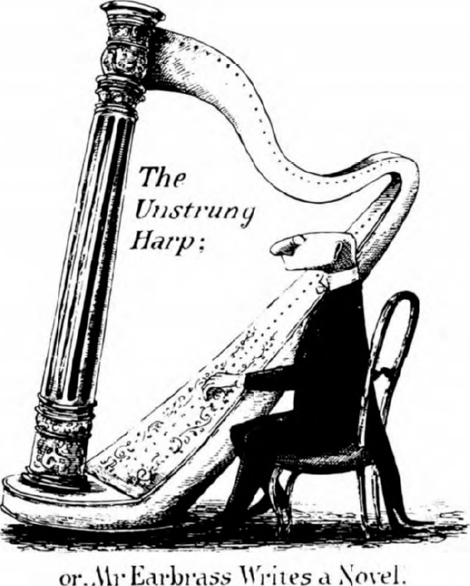
The Unstrung Harp (front cover)
| |
| |
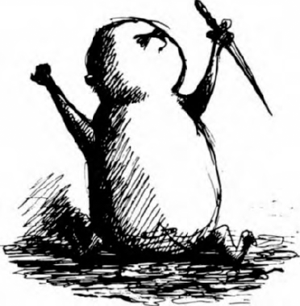
The Beastly Baby
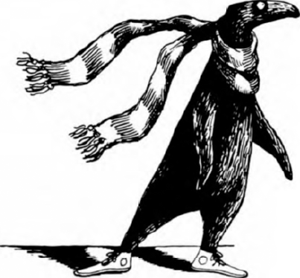
The Doubtful Guest
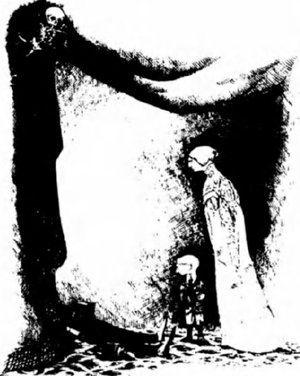
A Gorey Alphabet
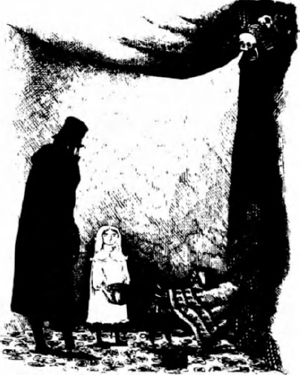
| |
| |
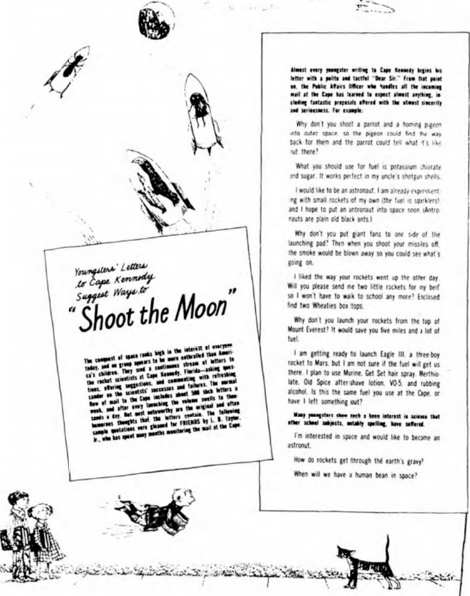
Friends Magazine
| |
| |
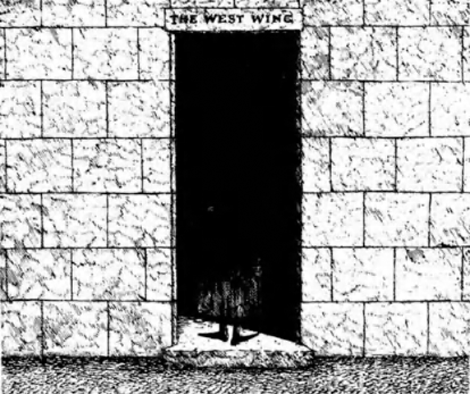

The West Wing
| |
| |

Dracula (programme cover and poster)
| |
| |
| |
| |
| |
| |
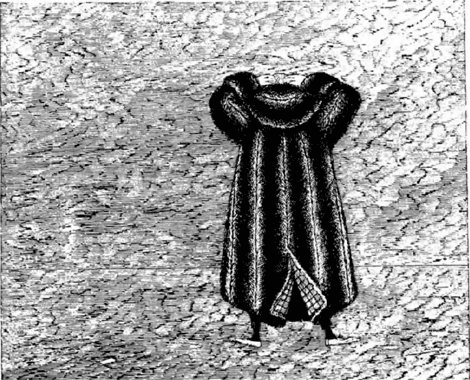
Edward Gorey: self-portrait
| |
| |
agony through which ‘Mr C(lavius) F(rederick) Earbrass,’ author of A Moral Dustbin, More Chains Than Clank, Was It Likely? and the Hipdeep trilogy, goes; for on November 18th of alternate years ‘Mr Earbrass begins writing “his new novel”’ The first ‘scene’ of this book (in text and illustration) shows the quaintly headed Mr. Earbrass in an overcoat, standing in snow ‘on the croquet lawn of his home, Hobbies Odd, near Collapsed Pudding in Mortshire. He is studying a game left unfinished at the end of summer.’ With agate eyes, Mr. Earbrass' head in bald and elongated to the point of his nose, under which reposes a moustache - the whole features of which are strinkingly reminiscent of a marble bust. Having thought of a title, The Unstrung Harp, he now has to render a plot to fit it. The almost daily life of an author-at-work is exposed here - sleepless nights; the cries of ‘Dreadful, dreadful, dreadful;’ the materializing of a minor character in the book named Glassglue at the head of the stairs - all is treated until the final day when ‘tuh is published’ by Scuffle and Dustcough. It is in the hand-printed text and illustrations that Gorey's wit was first shown to a public which, in 1954, was small indeed to appreciate a new ascending star above the bleak horizon - a star to rise into a sparkle of delight through his literary and artistic ‘malcontents’.
His second book was called The Listing Attic and was made up of illustrations to limericks in a new departure of this form. The note of these awesome verses is struck on the opening page with an anguished and writhen figure crying: ‘O rage! O désespoir!’ Three examples of the limericks are:
A gift was delivered tot Laura
From a cousin who lived in Gomarrah;
Wrapped in tissue and crepe,
It was peeled, like a grape,
And emitted a pale, greenish aura.
From the bathing machine came a din
As of jollification within;
It was heard far and wide,
Had a definite flavour of gin.
From Number Nine, Penwiper Mews,
There is really abominable news:
They've discovered a head
In the box for the bread,
But nobody seems to know whose.
This was followed by The Doubtful Guest, a furry, bird-(penguin-)like creature, with a long muffler, tennis shoes, and a head somewhat resembling Mr. Earbrass'/. It arrived unannounced, ‘standing on top of an urn’ and was brought into the house ‘Where it chose to remain with its nose to the wall’. It joined the family at breakfast; ‘wrenched off the horn from the new gramaphone, / And could not be persuaded to leave it alone;’ ‘At times it would tear out whole chapters from books;’ or ‘be discovered inside a tureen’. ‘It came seventeen years ago - and to this day / It has shown no intention of going away.’
By 1959, Edmund Wilson had seen Gorey's fourth volume, The Object Lession, his first real off-beat attempt at an untried genre. Although seemingly objectionless, it is neatly compact within the realms Gorey set for his own private world of pen and paper. It takes nine full-page illustrations to portray the last two sentences of the book: ‘It now became apparent (despite the lack of library paste) that something had happend to the vicar; guns began to go off in the distance. At twilight, however, no message had come from the asylum, so the others retired to the kiosk, only to discover the cakes iced a peculiar shade of green and the tea-urn empty save for a card on which was written the single word: Farewell.’
The first book Gorey ever completed would have to wait the test of time of his other published work. But finally it appeared - The
| |
| |
Beastly Baby - the like of which is unparalleled. The first is the only sentence oi this tale with any natural understanding, with the first five sentences reading: ‘Once upon a time there was a baby. It was worse than other babies. For one thing, it was Iarger. His body was not merely obese, but downright bloated. One of its feet had too many toes, and the other one not enough.’ Efforts to ‘dispose’ of it were always aborted, until one day ‘It was set on an exposed ledge’ and ‘A few minutes later, a passing eagle noticed it there’. Picking the baby up, the eagle's claws could hardly hold it. ‘He attemted to get a further grip on it with his beak. There was a wet sort of explosion, audible for several miles. And that, thank heavens! was the end of the Beastly Baby.’ A voracious reader, Gorey may have come across books on the Marquis de Sade. For his contemplated, but never composed, ten-volume Les Journées de Florbelle, ou la Nature Dévoilée, Sade's notes include a fête ‘in which children are blown up by rockets and bombs [fireworks]’.
Today, Gorey is in his fifties and a perennial bachelor. Born in Chicago, educated at Harvard - majoring in Frerich - he is now a New Yorker. At the end of his 1959 article, Edmund Wilson says that Gorey's first four ‘albums give me something of the same sort of pleasure that I get from Aubrey Beardsley and Max Beerbohm, and I find that I like to return to them’. Gorey's work can actaully be compared with no other's. His ingeniously devised drawings are made with pen and black ink. (There have been the odd exceptions of additional colour.) Yet they resemble a cross between the most prized tapestry, the clarity of fifteenth- or sixteenth-century woodcuts, and the heavy engravings found in Victorian books and periodicals. The Ultimate Thule seems to be just beyond each horizon line in a Gorey illustration. Precise about chronology, the timelessness of his subject matter may infuse a scene of New England with the Limehouse district of London during the perilous nights there during the 1890s. Grisly or grim, whatever his work may be termed, his horrific drawings could have diverted a Victorian child on a dreary dank day. And the unexplained curiosities in the compilation of strange happenings by Charles Fort are commonplace in Gorey's work.
For the most part, his stories (art and text) are, in want of a better expression, Gothic. They possess the prerequisites for such a genre: poetry and the element of the supematural. But they are not possessive of the late eighteen-century Gothicness - the humourless grimness of Monk Lewis, Mrs. Radcliffe or even William Beckford. Rather, they depict the Gothicness of the latter part of the twentieth century - (brought on by the mind-boggling shattering of all human concepts during World War ii) - even if the plots revert to a satirical parody of the turn-of-this-century melodrama.
In his work there is displayed a totally sane sense of humour. Gorey never choses to be in the company of the ribald. (His Curious Sofa: A Pornopraphic Work ‘by Ogdred Weary' is filled with scenes leaving all to the complete imagination of the reader - such as: Lady Cecila led Alice to her boudoir, where she requested the girl to perform a rather surprising service.’) His work reveals an innocent irreverence to all natural matter. His periphery of the One outmasters the regions of the Many. The Cosmic does not exist in Gorey's work. He deals only with the minute situation in a given, and frozen, instance of Time. For some, his preciously slender volumes lack a positive plot. It is certainly true that the thread in each story is tattered and worn and almost lost before the last page. But this only endears the haphazard continuity of the whole to the beholders of so slender a subject.
The nineteenth and twentieth centuries have produced Schools of Realism, Impressionism, Expressionism, Dadaism, Surrealism. Gorey's art does not fit neatly into any one of these
| |
| |
categories. Neither is his work Nosensical - in the vein of Edward Lear. (It may even be discussed to be Nonsensical, but with the second n omitted - to read No Sense.) The goal of each of his intended tales is never set forth in explanation - no matter how nonsensical it may seem. (The master of such a school on unitended nonsensicality was Saki - H.H. Munro, for whose stories Gorey made a set of illustrations.) Gorey, on the other hand, devotes his time and attributes to the spontaneous spark of a single thought that glitters as a glowworm with an endless capacity to illuminate. To encounter the entire array of Tiffany's wares in one glance would create a bedazzlement of confusion. A singular, but poignantly perfect, gem suffices praise above trayful upon trayful of precious stones. Yet the singular gem is the priceless choice and heirloom. Such unique gems are the pieces of work - in art and text - which enhance on paper the spark within Gorey's mental processes.
If he be pronounced guilty of providing a ‘single effort’ of an apparently plotless tale, it should be remembered that he is recalling a number of things from the Past. If his productions seem to have the disjointed continuity of a film on a cutting-room floor, there may be a valid reason. As a student of the Film, Gorey has an enviable knowledge of the History of the Film - especially the silent film. In the days before talkies, singular scenes were set before the audience - with captions to motivate the imagination in relation to the motion picture scene on the screen. In this light, Gorey's books have a fascinating nostalgie background. One of his books was dedicated to Lillian Gish. And he was the first person who told me of Fritz Lang's Dr. Mabuse films, which I later saw and had to thank him for his introduction of them to me. His knowledge of the Film caused me to lose a bet with him - although it was for only a nickel (five cents). Talking with him one day in New York, a certain film was mentioned. Each of us named a different director for it. Having no immediate way to check up on this in New York, I waited until I returned to Detroit. I looked into the matter - and discovered I was wrong. However, I must have been a poor loser. Detroit is on the U.S.A.-Canada border and I obtained a Canadian nickel and sent that to Gorey in New York, in which city he was unable to spend it. Also - his ‘disjointed’ plots may even be considered in the light of an anticipation - the anticipating of the New Wave in films - which started about the time of Jules et Jim.
I first met Gorey in New York in the hot summer of 1960. I was then Art Director of Friends Magazine, published in Detroit, and I was asking Gorey to do art work for it. Through this origin of relationship, we met many times in New York. He is as gleeful as a child when given a present - especially if no official occasion be attached. And such a present I gave him one day while we were lunching at Miyoka's, New York's oldest Japanese restaurant. The present was wrapped in cheap brown paper, with a bit of coloured string I had found in a drug store. The actual present was the then clandestine Paris-printed Story of O. He had read it in French but had never seen it before in English. He has always been an almost insatible reader. He does not care for the affected style of Frederick Rolfe/ Baron Corvo, but he can fall out of bed laughing at the contents in a book by William Burroughs. A Catholic in childhood - a persuasion not followed since - he still reads Thomas Merton and is seriously attached to Taoism, knowing Arthur Waley's Three Ways of Thought in Ancient China and extracts of Chuang Tzu. Possibly his favourite book is Lady Murasaki's Tale of Genji. His very appearance - especially in winter - would most certainly appeal to the eyes of an avid occultist. Gorey's imposing height of more than six feet is not the least of the feast for such eyes. In cold weather, he wears a fur
| |
| |
coat almost touching the ground and a hat to cover his sandy-grey hair. His hands are covered with more rings than fingers in number. And from his lofty head sterns a now-cropped-but-previously-magnificent Old Tes tarnent-prophet beard. His feet are always clothed in tennis shoes. (He will go nowhere if he cannot wear them.)
If he be a rebel, he is one without a cause. There is no optical illusion in his work, for he is disenchanted by nothing - thereby having no need to even try to recall some fancied resemblance to anything from the real world in which he actually exists. For he does exist in the world of today. He not only has a telephone but an answering service as well. He is a domesticated creature. He lives in a single room in New York not far from the Morgan Library - where he can glance at a Gutenberg Bible any day he wishes. With the exception of doors and windows, the four walls of his room are stocked with books. Browsing in book shops during the day, his one passion in the evening is the Ballet. Whenever he is in New York, he sees every performance of the New York City Ballet Company. He has drawn programme covers and posters for the company. Called an ‘arch-balletomane,’ Gorey has designed two frontcloths for the Chopin-Jerome Robbins Concert or The Perils of Everybody. As Hamlet's father's ghost haunts the ramp arts, the more-than-live Gorey haunts the New York City Ballet Company. During the course of one day, he invited me along to see a ballet with him that evening. I arrived at the theatre first and was perplexed about buying a ticket. Did Gorey have a ticket already? Should I buy two tickets? Or what? When he arrived, he merely told me to buy a single ticket for myself. The explanation came later in the evening. Seeing almost all of the company's ballets he needs no ticket. He sits anywhere - on the floor, on the stairs, in an empty seat. He is really the Phantom of the ballet - in New York.
By no means the first person to do so, Gorey has employed the Alphabet to act as a beginning for the lines or verses in some of his books. In praising the use of the Alphabet in his Foreword to John O.C. McCrillis' Printer's Abecdarium (1975), Dale Roylance includes these words: ‘In our own time the alphabet book continues to flourish in great variety. Edward Gorey, in his Gashlycrumb Tinies, extends and slightly warps the abc tradition with twenty-six little descendents of Kate Greenaway meeting untimely ends...’ Some of the Tinies and their unnatural fates are:
G is for George smothered under a rug...
P is for Prue trampled flat in a brawl...
W is for Winnie embedded in ice...
X is for Xerxes devoured by mice...
Y is for Yorick whose head was knocked in...
Z is for Zillah who drank too much gin.
The Fatal Lozenge (or The Gorey Alphabet in England) includes the following verses:
An Apparition of her lover
She recognizes with dismay;
And later on she will discover
That he himself had died today.
The Fetishist gets out the hassock,
Turns down the lamp, and bolts the door;
Then in galoshes and a cassock,
He wordships It upon the floor.
The Proctor buys pupil ices,
And hopes the boy will not resist
When he attempts to practice vices
Few people even know exist.
The Resurrectionist goes plying
Without ado his simple trade;
And got with nothing but a spade.
The Chinese Obelisks tells the story of ‘A [who] was an Author who went for a walk,’
| |
| |
encounteringe strange events: ‘C was a Cavas encrusted with dirt’ - ‘H was a House whose foundations were sinking’ - ‘K was a Keepsake picked up from the gutter’. Finally, ‘U was the Urn it [a Thundercloud] dislodged from the sky,’ fatally wounding the Author. ‘Y was the Yew beneath which he was laid’ and ‘Z was the Zither he left to the maid’. The Glorious Nosebleed has a woman wandering ‘among the trees Aimlessly,’ ‘The creature regarding them Balefully,’ a pudding ‘served Clumsily,’ another woman running ‘out of the room Tearfully,’ a man explaining ‘himself Unconvincingly,’ a man's car striking ‘her down Wilfully,’ a song ‘sung eXcruciatingly,’ a woman watching ‘him go Yearningly,’ and an author writing ‘it all down Zealously’.
The first approach to Gorey's rhymes may bring to mind the Sweet Singer of Michigan, Julia Moore, the person Mark Twain thought was the worst writer in the world. Seriously comparing the work of these two people, a concrete difference is immediately apparent. Gorey writes in a designed fit of fancy. Julia Moore was the compiler of insidiously funereal doggerei almost always inspired by the demise of some young child. Just one of her lyrics can be witness to her awkward style, that of the reporting of the death of Little Libbie:
While eating dinners this dear little child
Was choked on a piece of beef,
Doctors came, tried their skill awhile,
But none could give relief.
Nothing by Gorey is so self-parodying as the verses of Julia Moore, the first of the ‘mortuary’ poets who flourished in America in the 1870s.
Some of the titles of Gorey's little books are A Limerick (of four illustrations and four lines of text); Leaves From a Mislaid Album (with uncaptioned illustrations); The Salt Herring (with such a caption as: ‘He came along holding in his hands dirty, dirty, dirty...’); Story for Sara; The Lost Lions, or Having Opened the Wrong Envelope; The Abandoned Sock; The Disrespectful Summons; The Lavender Leotard; The Deranged Cousins, or Whatever (the cousins being Rose Marshmary, Mary Rosemarsh and Marsh Maryrose); The Iron Tonic, or A Winter Afternoon in Lonely Valley; La Chauve-Souris Dorée, or The Gilded Bat; The Inanimate Tragedy (about Pins, Needies, a No. 37 Penpoint, a Glass Marble, a Two-Holed Button, a Thumbtack, a Four-Holed Button, Knotted String - all, at the end flinging ‘themselves into the Yawning Chasm’); The Pious Infant: Henry Clump; The Nursery Frieze; The Wuggly Ump (dedicated to his parents just before his father died of cancer); The Willowdale Handcar, or The Return to the Black Doll; and The Bug Book. Not only does Gorey invent his own tales, he also invents their author. In other words, he presents some of his stories with names other than his own. One device in this intent is the anagram, and some of the names appearing on his books are Dogear Wryde, D. Awdrey-Gore, Dreary Wodge, Ogdred Weary, Raddory Gewe, Alphonse Allais and Charles Cros.
To capsulize a few of his books, one is called The Evil Garden, a supposed translation of Eduard Blutig's Der Böse Garten ‘in a translation by Mrs Regera Dowdy with the original pictures of O. Müde’ - and, eventually, they who enter it, ‘Fall down, or scream, or rush about - There is no way of getting out.’ [The Untitled Book] is ‘by Edward Pig,’ a series of pictures over captions reading: ‘Hippity wippity,’ ‘Qxiborick,’ ‘Flappery flippity,’ ‘Saragashum,’ ‘Thip,’ ‘thop,’ ‘thoo,’ ‘Thumblely stumblely,’ ‘Ipsifendus,’ ‘Ramblely rumbelby,’ ‘Quoggenzocker,’ ‘Hip,’ ‘hop’ and ‘hoo’ - all under a single scene in which a small boy views fabulous beasts and their respective doings. In The Osbick Bird, ‘An osbick bird
| |
| |
flew and sat / On Emblus Fingby's bowler hat’ and the two remained together until ‘when at last poor Emblus died’ and ‘the bird alone / Was left to sit upon his stone. But after several months, one day / It... flew away.’ The West Wing is a captionless story told only in pictures, drawn ‘For Edmund Wilson,’ who must have been deeply delighted with the ghastly grimness of the ‘tale’. The Insect God relates the strange account of Milicent Frastley, ending with giant insects that ‘stunned her, and stripped off her garments, and lastly / They stuffed her inside a kind of pod; / And then it was that Milicent Frastley / Was sacrificed to the insect god.’ The Eleventh Episode ‘by Raddory Gewe’ and with ‘Drawings by Om’ reports the episodes of a nameless female. The Remembered Visit: A Story Taken From Life is about Drusilla - from ‘The summer she was eleven’ and ‘went abroad with her parents’ and met Mr. Crague, to whom ‘she promised when she got home to send him some insides of envelopes she had saved’ - but ‘Days went by.’ ‘Weeks went by.’ ‘Months went by.’ ‘Years went by. Drusilla was still inclined to be forgetful’ - only to remember her promise after she had read that ‘Mr Crague had died the autumn after she had been abroad’ - the same Mr. Crague, she recalled, who ‘wore no Socks’. The Sinking Spell is a study in the abstract - being about ‘A creature floating in the sky... falling slowly through the air’ - completely invisible - and finally going ‘beneath the cellar floor: / We shall not see it any more.’ The Secrets: Volume Two - The Other Statue
- with ‘Homage to Jane Austin’ - is told in thirty seemingly separate sections. There are ‘A clergyman staying at the Upturned Pig, the Rev. O. MacAdoo, wandered in a remote corner of the shubbery’ - and ‘Augustus woke to find his stuffed twisty was missing’ - and ‘In the folly a candlestick mounted on a horse's hoof rested on page 47 of The Romance of a Soda Cracker’ - and, finally, ‘At the same time, in the Soiled Dover, Victoria Scone danced a tango with Horace Gallop.’ The Blue Aspic is the horrid revelation of impoverished Jasper Ankle, secretly in love with the singer Tsi-Nan-Fu Caviglia. At the end of his tale, realizing his lack of power to prove himself worthy to her, ‘As she left the opera house with the Maharajah of Eschnapur, Jasper rose up from behind a snowdrift and stabbed her in the throat. He then stabbed himself and crying “J'ai trouvé Hortense!” feil dead on her corpse.’ Oh, yes, there is yet another alphabet: The Utter Zoo - with animals from the Ampoo to the Zote.
Aldous Huxley once wrote that ‘Some day I shall compile an Oxford Book of Depressing Verse, which shall contain nothing but the most magnificent expressions of melancholy and despair. All the obvious people will be in it and many of the obscure apostles of gloom as vague and miscellaneous reading shall have made known to me.’ Written more than twenty years before the appearance of The Unstrung Harp, it now seems that Gorey has ‘compiled’ such a book - if all of his work could appear between a single set of covers. But Gorey's verse and tales contain Gorey people - the dimless-looking infants and adults who appear from nowhere and, apparently, have nowhere to go. His work is also adorned with Gorey creatures, which express, if nothing else, ‘melancholy and despair’. These small evil-looking creatures flit in and out of his drawings, creatures as yet undefined zoologically. They seem to be enlargements of what must certainly appear through microscope lenses. But, whatever they may be, they have no ultimate purpose in the illustrations except to add to the grim delight they exude.
Entirely self-taught as an artist, Gorey served the Doubleday publishing company of New York for a decade as typographical designer of its Anchor series of paperbacks, as well as executing a number of covers for Anchor books. He was later Art Editor for the
| |
| |
Looking Glass Library books. He has produced dust-jacket designs and illustrations for other people's work, including Samuel Beckett. He is also known as an illustrator for children's books - Red Riding Hood and Rumpelstilkin, to name but two. Gorey has always been interested in art and, in New York, continually visits galleries. He and I attended the fiftieth anniversary of the Armory Show (The International Exposition of Modern Art, held at New York's 69th Regiment Armory, 15 February-15 March 1913, the first American glimpse of modern European art trends). One other gallery visit together was to an exhibition of Henri Rousseau's work, which included the most demonie painting I have ever seen.
The macabre humour in Gorey's output is far too sophisticated for it to be mere ‘child's play’ or, even, reading for the mediocre. He has created, since 1954, a mythological universe all his very own. His stories far surpass Things That Go Bump in the Night. These works may, in some way, be likened to the Penny Dreadfuls and the three-decker Horrors of a bygone day. Yet Gorey remains original in one aspect of his story development. Being an American, he has discarded that nation's rags-to-riches literary heritage and spells out a complete reversal of such Dime No veis that, no doubt, eminated in inspiration from the log cabin-to-White House background of Abraham Lincoln. Several of his little volumes did appear together under the general title: The Vinegar Works: Seven Volumes of Moral Instruction. The Moral of each of these tales must have been devised by some personage whose characteristics combined those of Peter Pan and the Marquis de Sade. (After all, as early as 1843, Saint-Beuve said that Byron and Sade were unquestionably ‘the two greatest inspirers of our moderns’. The Dadaists of this century delighted in Sade as a blaster of inhibitions and the Surrealists singled him out as one of their prophets).
The Gorey of ‘the Gothic novel’ and the Gorey of the Ballet are not the complete Gorey. There is also the Gorey who is a catfancier.
One day in New York, I was speaking to him on the telephone and - quite abruptly - one of my eardrums almost split. Calmly talking one second, Gorey suddenly shrieked: ‘Agrippina! Get down from there!’ He was shrieking to one of his five cats who was, at that very moment, walking across the top of his drawing-board, where reposed an opened bottle of ink. (Agripinna, Kanzuke, Koliden, Murasaki and Fujisubo are the names of the five cats he had before his sensitive nature acquired a sixth, and unwanted, cat this year.) His cats have appeared many times in print. Instead of using the Alphabet, he merely used numbers - from 1 to 50 (or L) - in his one book, Categor [ ]y. His cats are all from the Land of Pure Fun. There is nothing subtle or sinister about them. Behind their beguiling faces lurks pure delight - and the fun of existence. It is these amusing creatures which may - or may not - act as ‘familiars’ between him and the Muse of No Sense.
Impious, perhaps, in the ways of other men, Gorey remains a sentimentalist. His own work haunts him. The Hapless Child is Charlotte Sophia. ‘Her parents were kind and well-to-do,’ but ‘One day her father, a colonel in the army, was ordered to Africa.’ Once her husband is away, Charlotte Sophia's mother dies from a lingering malady and a series of unforeseen unpleasantries brings this now hapless waif to be sold to a drunken brute, who puts her to work making artificial flowers. Almost blind by now, she escapes into the snow-filled street, only to be mortally struck down by a car driven by her own father. ‘She was so changed, he did not recognize her.’ Gorey can never re-read this one tale without tears welling up inside him. 1977-1979 is an auspicious period for Gorey's work. Although he did not like the execution of his designs for the production of the New
| |
| |
York Dracula, he did win a Tony Award for them. (He is now working on his Edward Gorey's Dracula, which he has owed a published for ages.) In late 1978, a collection of eighteen of his stories were adapted as Gorey Stories, ‘an entertainment with music,’ opening in New York. (One set designed by him for this ‘entertainment’ portrays ‘flying Chinese dogs,’ a Chinese breed of a dog threathened with extinction which he read about in People Magazine.) Hallowe'en 1978 was set off in New York as a special Gorey Day. In the morning, he was interviewed on the Today tv programme and on another channel at 5.30 p.m. there was A Gorey Hallowe' en. The sets for Dracula sparked off a commercial enterprise, with a New York manufacturer bringing out a ‘Dracula Damask’ wallpaper (at 29 dollars a roll) and a matching fabric (at 30 dollars a yard). Gorey himself adores fur coats, saying that he has ‘won the biggest racoon in the world. It reaches clear down to the sidewalk.’ And, he says, ‘I have a whole closet full of furs, every kind you can think of.’ He designed several furry costumes for Gorey Stories. A New York furrier was so enchanted with these - especially ‘a racoon cover-up made entirely of loose panels that end in a long fly-away scarf’ - that he is introducing a ‘Gorey fur collection’ at the Spring 1979 International Fur Fair - ‘including mink and sable, but the designs will have some of the Gorey feeling of fantasy and fun’. There is also a 1979 Gorey Calendar.
He admits that he first read Dracula at the age of five. (If he had read the Bram Stoker novel at that age, had he earlier been weaned on cobwebs?) The sets he designed for the current Broadway production are all in various hues of grey. These greys are accented with solid blacks and whites and only the merest touches of red - as if with tiny drops of blood. However grim the critics may refer to these sets, Gorey's single word for them is just ‘spooky’.
People over the ages have recounted in words their opinions or philosophies. Lord Byron said: ‘Everything written is written for the purpose of being read.’ This applies to drawings as well. The British governor of Massachusetts said of Samuel Adams - whose revolution of 1765-1776 climaxed in the colonists drawing up their Declaration of Independence on 4 July 1776: ‘Every dip of his pen stung like a horned snake.’ The dip of Gorey's pen does no stinging: it only produces a tickle - a tickling no doubt coming from some unseen, waspish fancy which dwells in the subconscious darkness of each person's mind. In 1883, Lucio Vincente Lopez, in his La Gran Aldea, wrote: ‘Romanticism is the adolescence of art.’ Gorey - and his work - appears as no Romantic - but, then: ‘The Romantics are one part supernatural to two parts warped intuition’ (Dilys Winn, Murder Ink, 1978). And Bram Stoker himself once wrote: ‘Art is not to be real; it is to seem real.’ Whichever approach to Art or Life he may take, each and every night closes with the same ritual for Gorey: for his ‘midnight snack’ he has to have Oreos (American chocolate cookies) and milk. The summation for all for him is: ‘All life is fiction.’
|
|